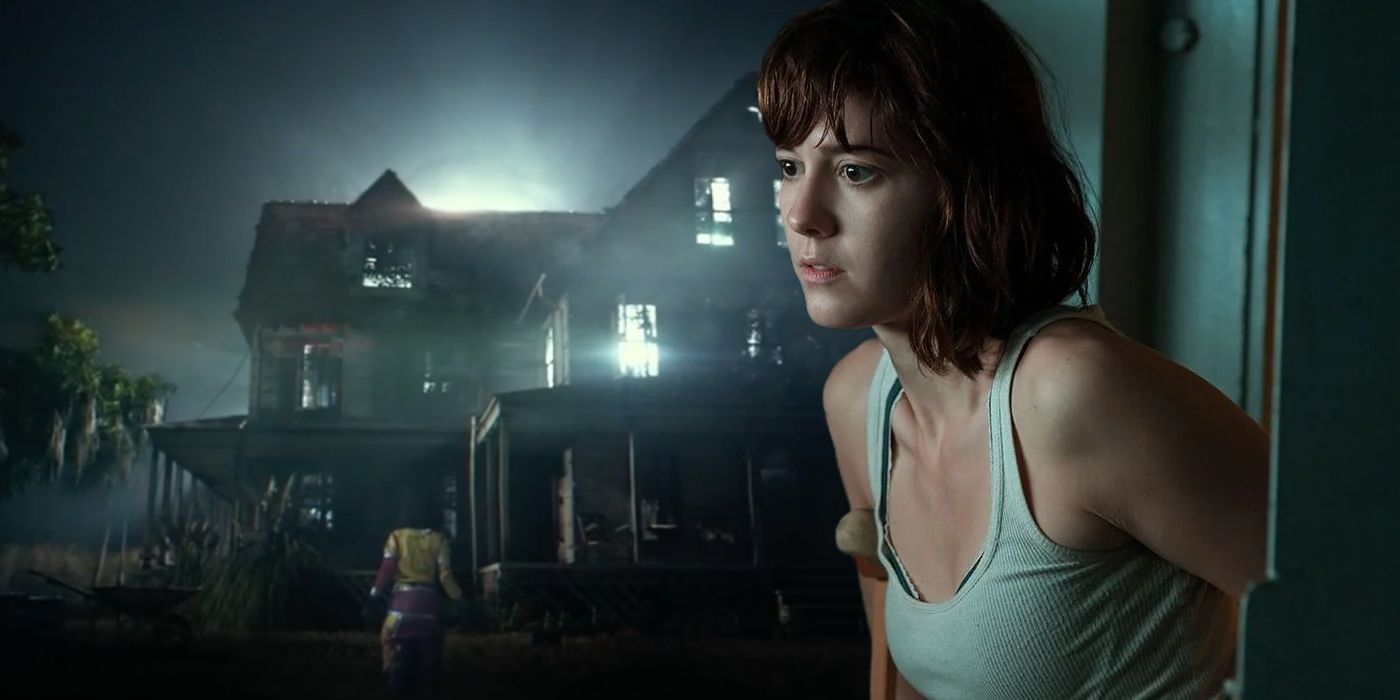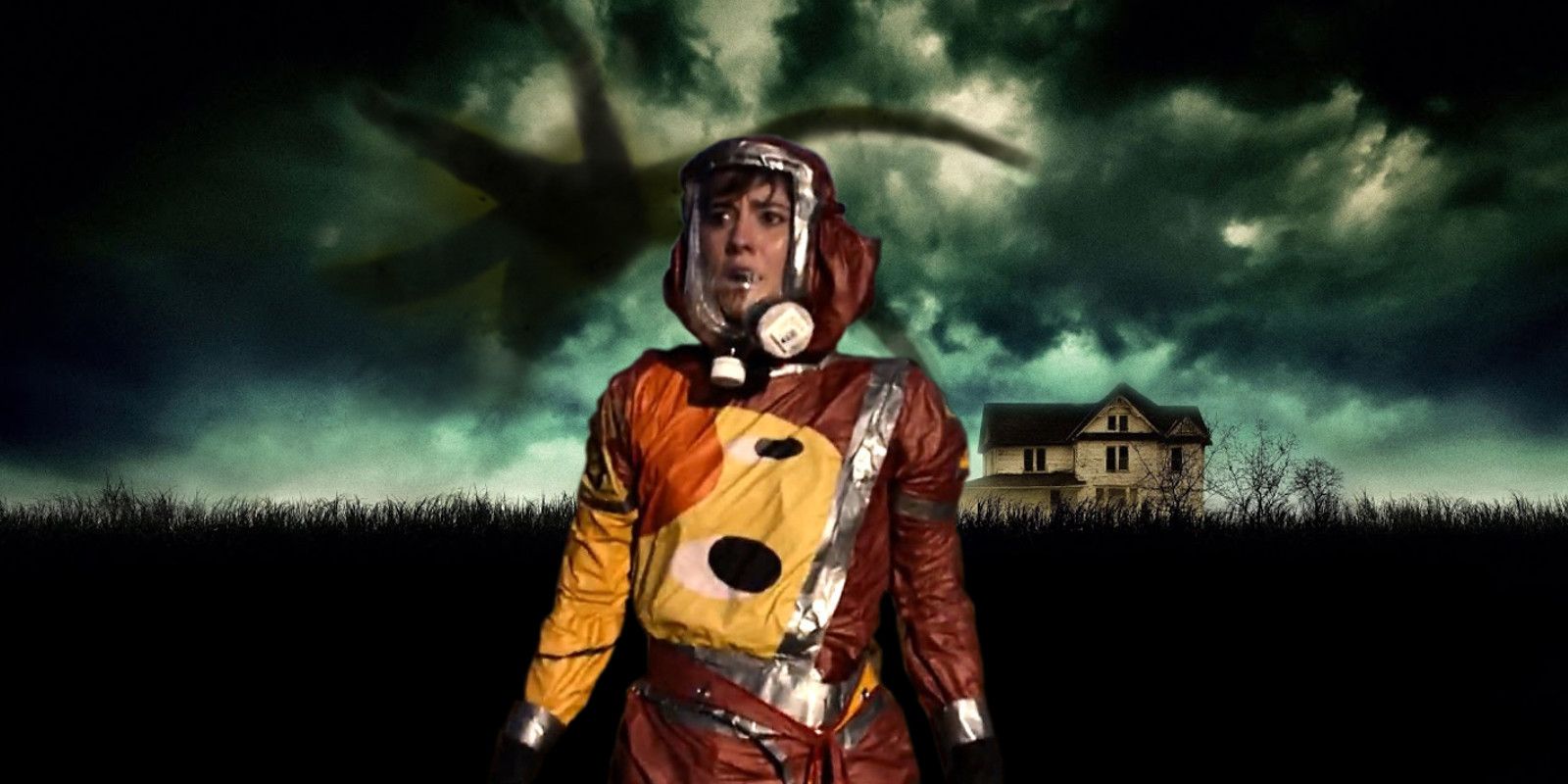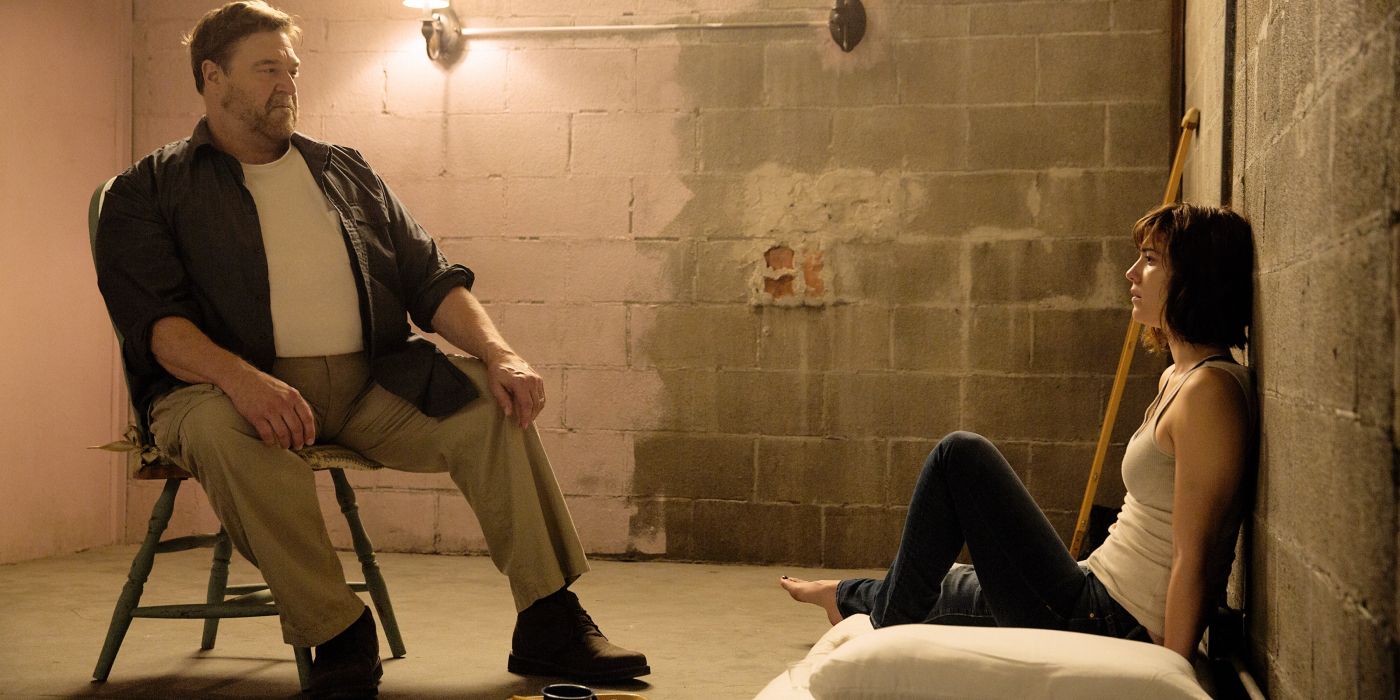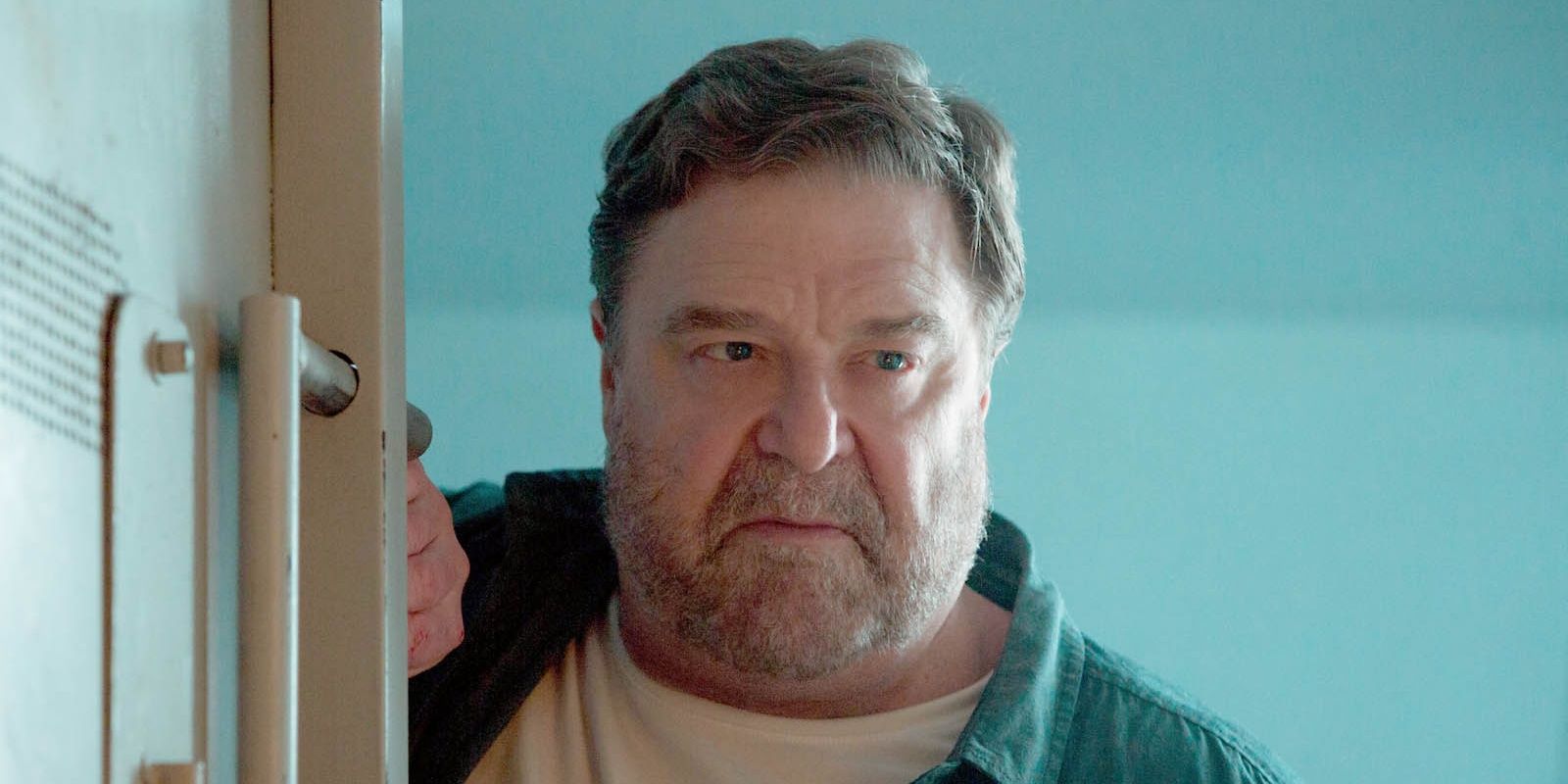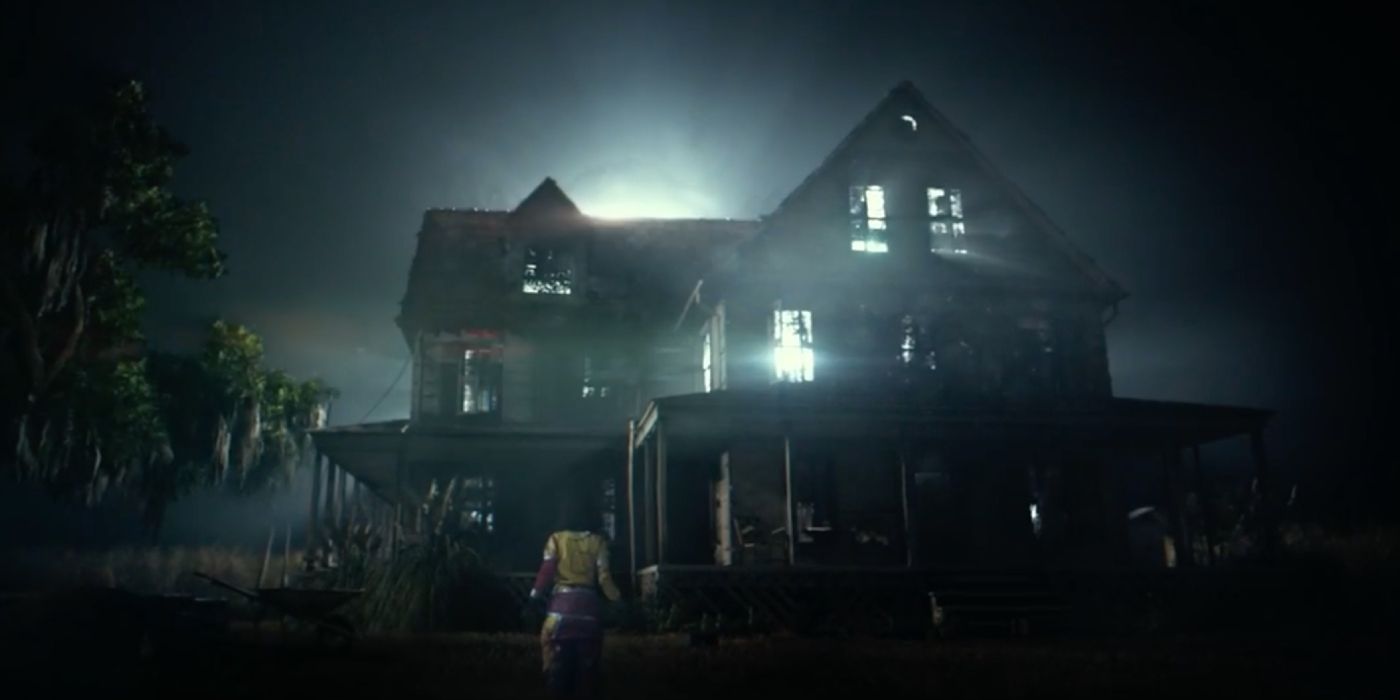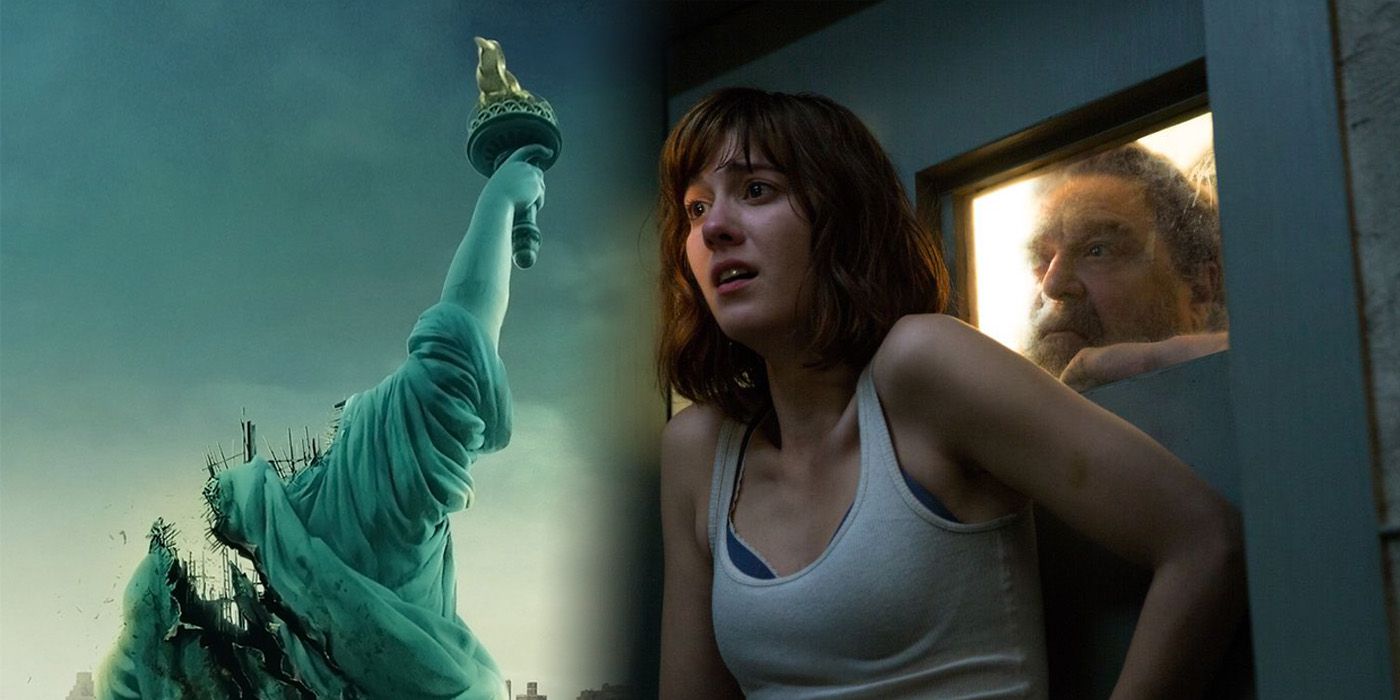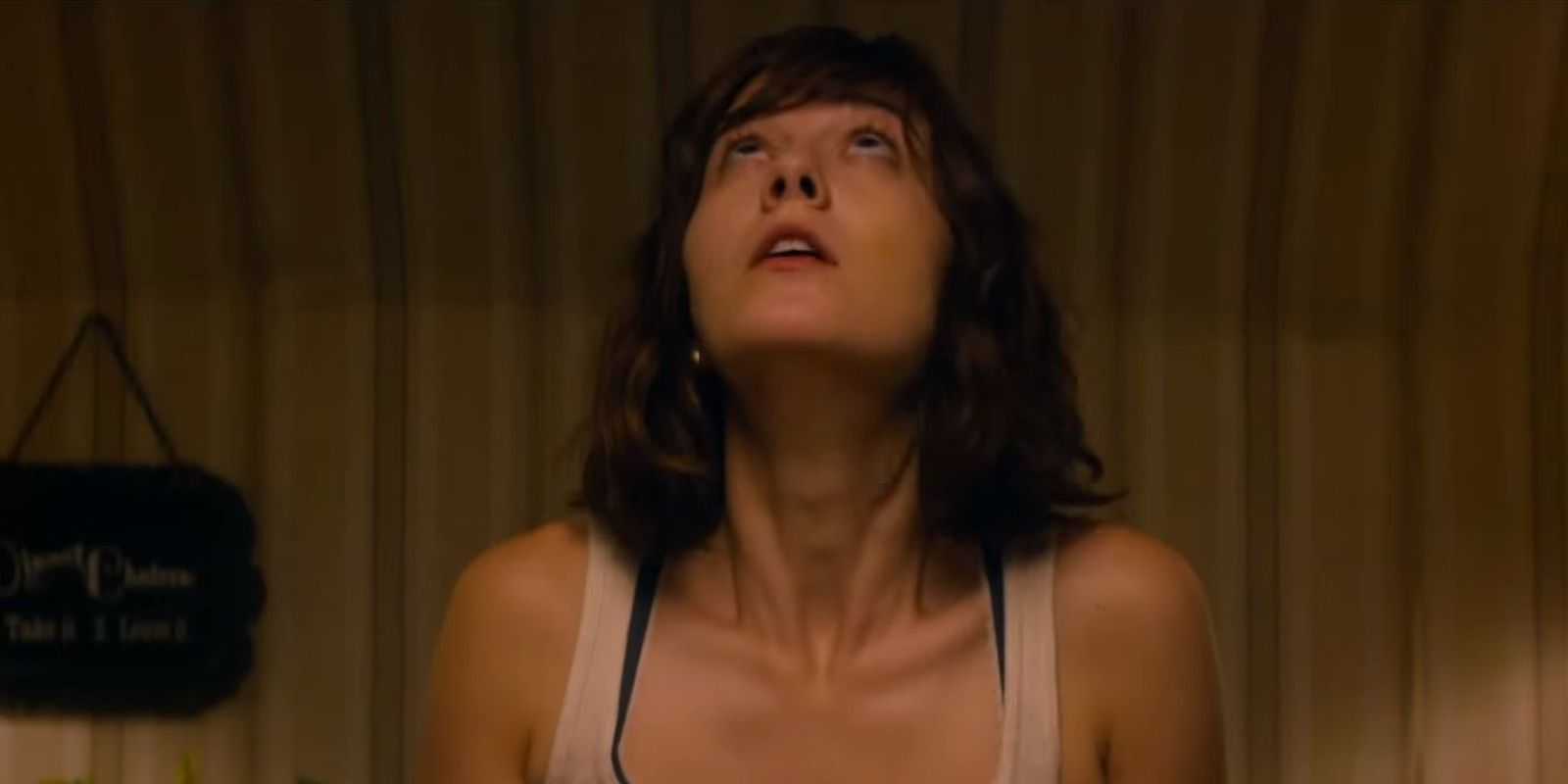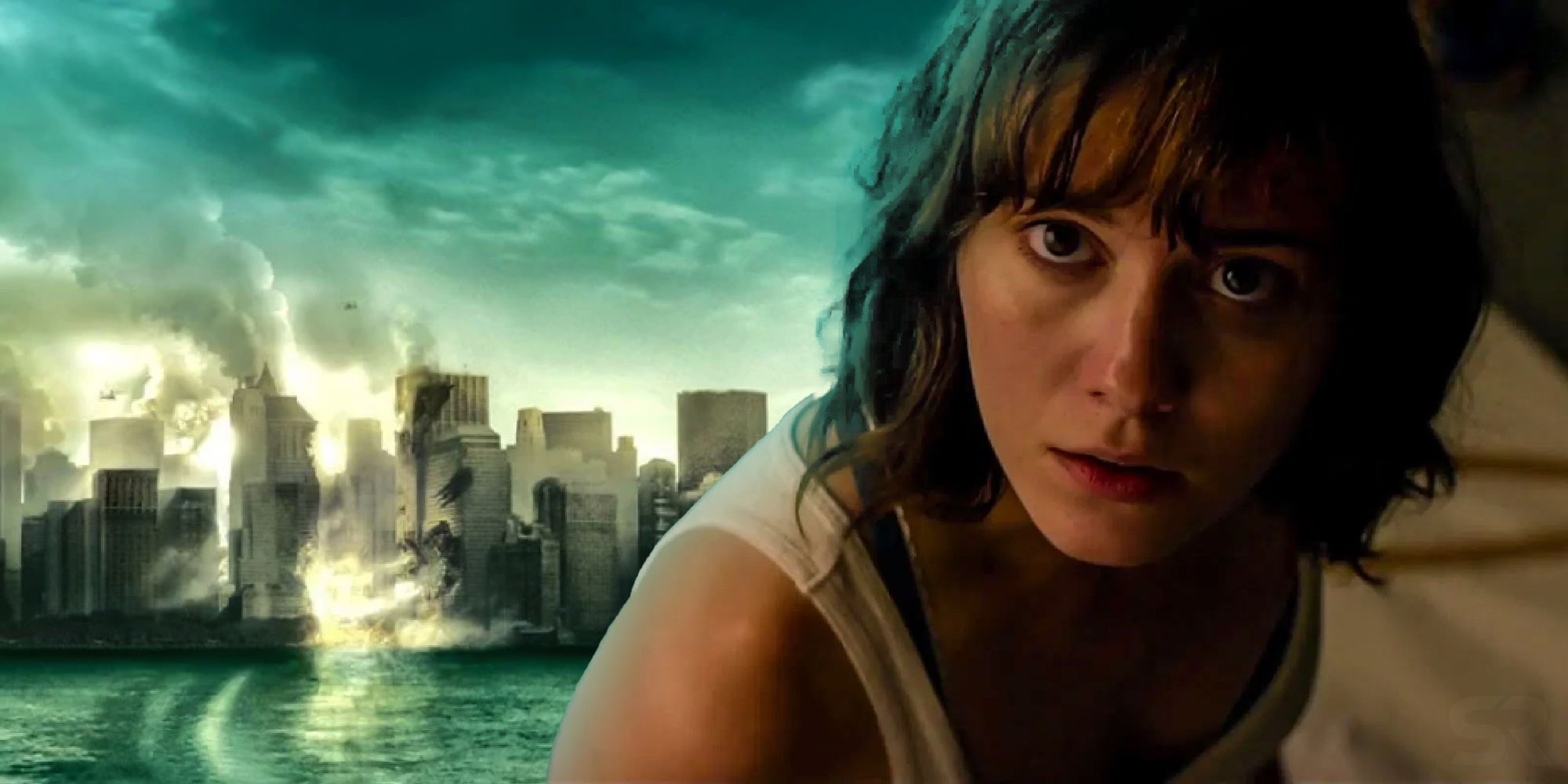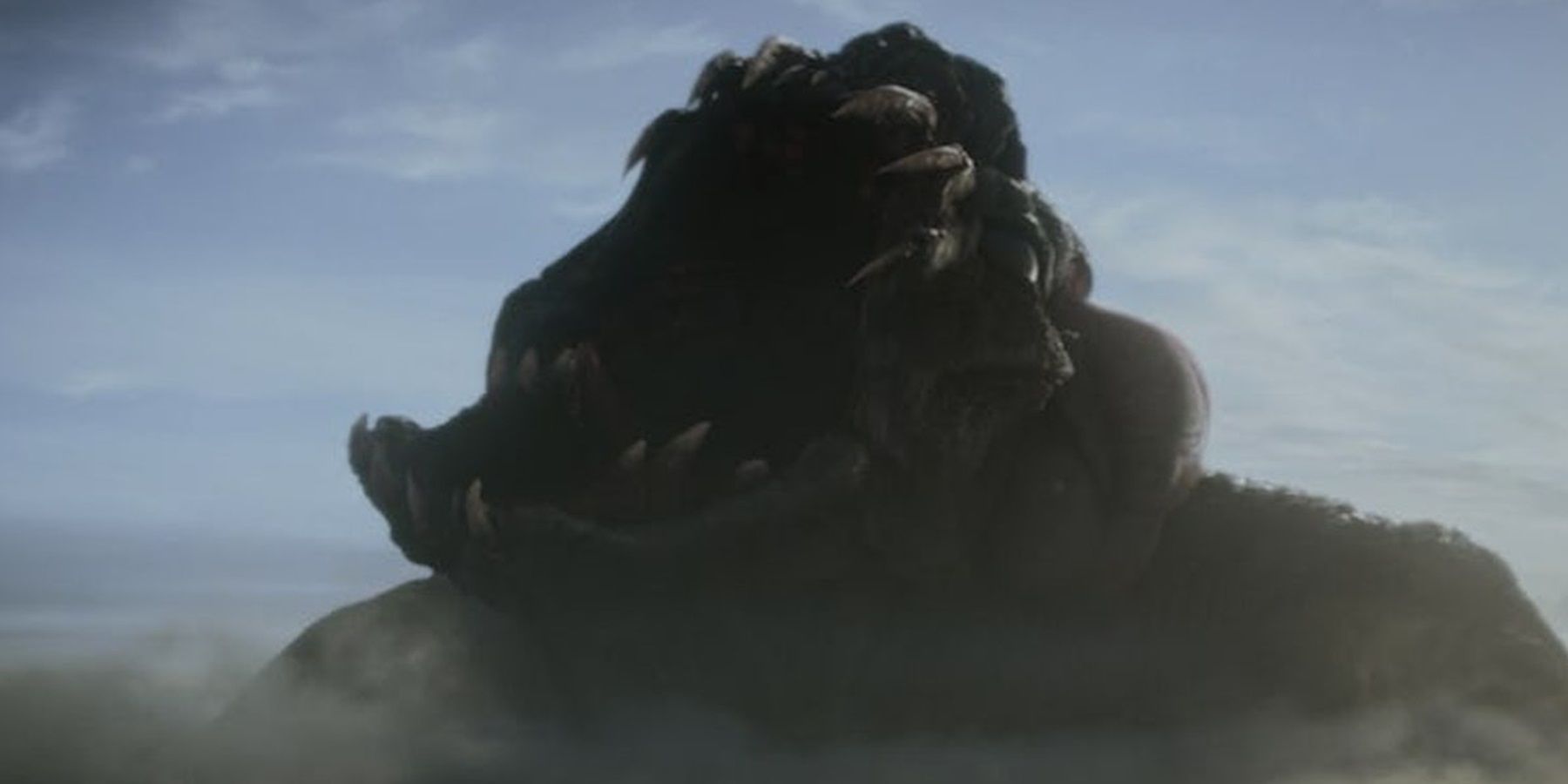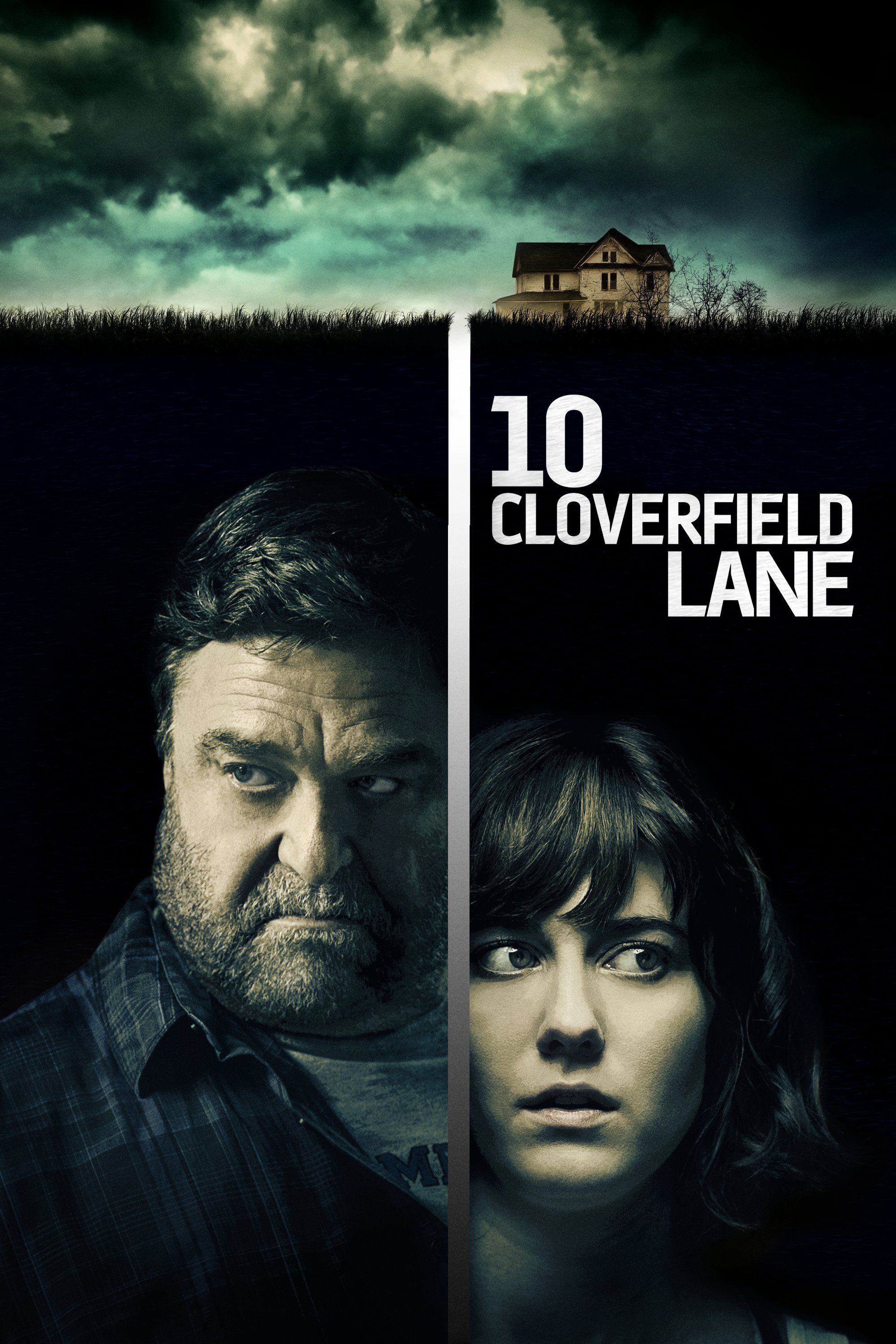Summary
- The 10 Cloverfield Lane ending divides audiences but fits with the film's themes of fear and regret, as Michelle overcomes one form of captivity to face a new, unknown threat.
- The ending reveals Howard's delusional obsession with having a family, as he uses Michelle to fill the role of his missing daughter, which adds depth to his motivations throughout the film.
- While the ending sparked controversy for its sudden shift into sci-fi territory, it thematically captures Michelle's need to overcome her fears and fight back, echoing the experiences of abuse survivors. The ending also connects to the wider Cloverfield franchise.
The 10 Cloverfield Lane ending is a divisive aspect of the otherwise acclaimed sequel, but it is a conclusion that plays off of the movie's deeper themes. The second film in the Cloverfield franchise is a deeply unsettling and claustrophobic experience, and from beginning to end presents itself as a cerebral and complex thriller that introspectively tackles themes of paranoia and regret. However, the movie bears little resemblance to the 2008 found-footage Kaiju movie Cloverfield, as on the surface it's only the final shots that link 10 Cloverfield Lane to Cloverfield.
10 Cloverfield Lane begins with Michelle (Mary Elizabeth Winstead) being run off the road and waking up in a bunker where her captor Howard (John Goodman) explains the world is under attack. Putting her doubts aside, Michelle settles into Howard's bunker alongside Emmett (John Gallagher Jr.). What follows is a tense character-driven drama that delivers a steady flow of dread. There are much deeper themes at play throughout 10 Cloverfield Lane, although — perhaps to its detriment — the ending requires a full examination to explain how it fits into the wider Cloverfield timeline.
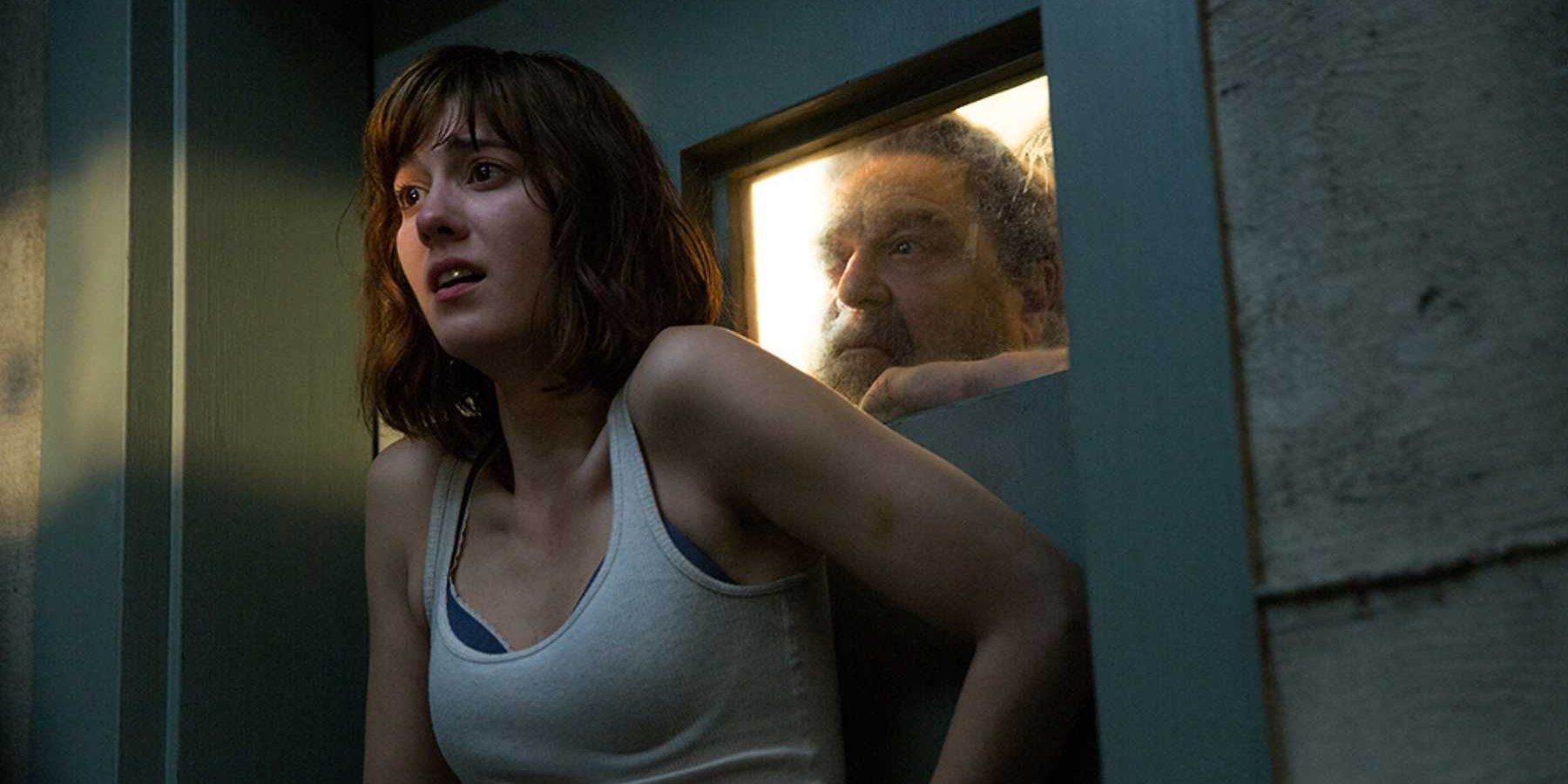
10 Cloverfield Lane: Every Alternate Ending & Plot Change Explained
10 Cloverfield Lane director Dan Trachtenberg revealed he cut a handful of scenes from the movie. Here's what was changed from the Cloverfield sequel.What Happens In 10 Cloverfield Lane's Ending
After Howard grows increasingly dangerous and unhinged, Michelle decides to risk freedom in the 10 Cloverfield Lane ending, escaping from the bunker after setting it alight. Dressed in her makeshift protective equipment, Michelle manages to escape the bunker just before it explodes, and she realizes Howard's insistence that the air is toxic was untrue. Seeing birds fly overhead, Michelle sees that the air is breathable, and removes her mask. However, Michelle escaping Howard's bunker, while symbolically important, isn't the main reason the ending of 10 Cloverfield Lane creates so many questions.
Though aspects of Howard's claims were false, with the sudden emergence of a giant alien in the sky, it becomes clear the world is indeed under attack. The creature attacks Michelle, and she's forced to fight for her life, eventually killing the huge being using a makeshift Molotov cocktail. Finally making her way off of Howard's farm, Michelle finds herself at a literal crossroads, choosing between heading to a safe zone in Baton Rouge or going to Houston to help fight the creatures. The 10 Cloverfield Lane ending sees Michelle opting to go to Houston.
This sequence of events at the end of 10 Cloverfield Lane confused many audience members, especially prior to the release of The Cloverfield Paradox in 2018 which filled in some of the blanks. Until its ending, 10 Cloverfield Lane had been an intimate and tense psychological thriller where the threats from what was happening outside gradually became secondary to Howard's villainy. In addition, many of Michelle's decisions, and why she was held by Howard in the first place, created legitimate questions in their own right. However, the ending does fit the rest of the movie, and an examination of the meaning of 10 Cloverfield Lane and its core themes explains how.
Howard Took Michelle To Rebuild The Family He Lost
One of the most suspicious and significant elements of the 10 Cloverfield Lane ending is Howard's bunker, and the only explanation offered for why Michelle cannot leave it comes from Howard himself. As Howard explains, he brought Michelle there to treat her injuries from the crash. Their subsequent quarantine in the bunker at 10 Cloverfield Lane (which happens to be Howard's address) came as a result of the attack from unknown forces. However, there's far more to Howard's story than he offers Michelle, and this is part of the reason for her distrust of her savior/captor.
As Michelle and Emmett later find out, Howard's regular mentions of Megan aren't all about his daughter — the picture, and "Megan"'s clothes offered to Michelle, actually belonged to a local girl named Brittany who went missing several years prior. When Howard's behavior becomes more delusional, it becomes clear that he's obsessed with the idea of having a family, and that he wants Michelle to fill the role of his daughter. Michelle and Emmett must fight against Howard, unsure if it's safe to leave the bunker, but knowing that Howard is a threat to their lives.
Howard was completely delusional about almost everything, although it's unclear how much of his story he believed. The fact that Michelle found the world was experiencing a genuine alien invasion when she left revealed a threat did exist outside. Howard had connected a few dots but had nowhere near the full picture, and there wasn't toxic gas in the air as he claimed. The specific nature of the threat was also likely secondary to his actions. Had he found Michelle after the Cloverfield monsters arrived he likely would have still held her captive, with the only difference being that his story was actually true.
Where To Watch 10 Cloverfield Lane
10 Cloverfield Lane Is About Fear & Regret
The core themes of 10 Cloverfield Lane are regret and fear, both of which are exemplified by John Goodman's Howard. Howard acts in many capacities throughout 10 Cloverfield Lane. He's the film's primary antagonist as well as Michelle and Emmett's savior. He's also a murderer, he's delusional, and he's a dangerous conspiracy theorist (even if the conspiracies prove to be somewhat true). However, understanding Howard's backstory is an important part of understanding his motivations throughout the film. Howard's past is only relayed in part by Howard himself (and later clarified by Emmett) in 10 Cloverfield Lane, making much of what the film reveals about him relatively unreliable.
However, his job working on satellites would potentially serve as a reason that Howard had some prior knowledge of the danger of an attack, and his comments about his daughter and ex-wife being gone take on a sinister tone after the later revelation regarding Brittany. It's clear that Howard is a dangerous man, and that he has a fixation on filling the role of his missing daughter, with the implication being that Michelle is only the latest in a string of captives. It seems most likely that Howard saw his opportunity to take Michelle when the attack started, and then used it as a means of keeping her in the bunker with him.
While 10 Cloverfield Lane is a particularly claustrophobic thriller, it's ultimately not about the bunker, nor is it about the alien attack that made the bunker necessary. The film's true meaning is revealed in a touching scene between Emmett and Michelle as they discuss their lives before the attack. Emmett explains that he never left his hometown due to his fear of not being successful and that it was perhaps his biggest regret. Michelle shares her own regret, which links back to the very beginning of the film.
Michelle begins the film by running from her fiancé after an argument, and she reveals it to be her usual coping mechanism due to an abusive childhood. This abuse draws parallels to the psychotically paternal relationship Howard attempts to force upon her, and her ultimate resistance shows her attempting to break the cycle of fear and regret. Giving Emmett a backstory with a similar motivation builds a bond between the two characters, and Emmett's death provides the push that Michelle needs to finally break free of her own fear and escape the bunker in the 10 Cloverfield Lane ending.
The Real Meaning Of 10 Cloverfield Lane's Ending
The 10 Cloverfield Lane ending sees Michelle escape one predator and stumble into the path of another in the form of a large alien threat. While it is an abrupt reveal, it actually provides an interesting continuation of the film's established themes. By presenting Michelle with yet another monster to face, it allows her an opportunity to fight back, and as she's only just narrowly escaped one form of captivity, she's finally inclined to do so.
In the final moments, Michelle is at a critical juncture, choosing between running for safety or fighting the problem head-on. Just like the reveal of Cloverfield's monster in the film's final shot, this scene ties everything together — everything that Michelle has faced throughout the film has led her to that crossroads, and she's finally willing to fight back. Though 10 Cloverfield Lane's final scenes are often cited as the film's weakest moments, they actually provide an interesting continuation of its deeper themes, as well as tying it all into the Cloverfield franchise.
Why The 10 Cloverfield Lane Ending Was Controversial
The 10 Cloverfield Lane ending sparked controversy because some viewers felt it was shoehorned into the story to slot it into the wider Cloverfield franchise. It was a jarring leap into sci-fi territory and made little sense tonally if those watching didn't understand the Cloverfield connection. Many critics felt the ending undermined the rest of the movie and 10 Cloverfield Lane would have been better off as a standalone movie with a less genre-bending conclusion. However, even though the 10 Cloverfield Lane ending is controversial, it has just as many supporters.
The sudden change in pace mirrors Michelle's need to change — and quickly — if she wants to escape Howard and the toxic environment in the bunker. She needs to overcome her fear, especially when it comes to putting herself in danger, and the near-instant push from a slow-creep thriller into a high-paced alien encounter thematically captures the adrenaline panic Michelle would be feeling at the end of 10 Cloverfield Lane. The aliens also represent an unknown she faces when taking that next step, similar to the unknown Emmett feared that kept him from leaving.
Many trapped in the kind of abusive relationships 10 Cloverfield Lane masterfully explores have reported that fear of the unknown life beyond their current circumstance left them unable to flee their abuse. This is crystallized in the movie's final moments when Michelle heads toward Houston against a lightning-flash backdrop of landing alien ships. She has overcome her fears and knowingly heads into peril having developed an awareness that the peace she seeks lies beyond further hardship.
This echoes the experience abuse survivors face when bringing their abusers to light, and the fact that many go on to help other domestic abuse survivors despite the proximity this brings them to their own trauma. With consideration of its ties to the deeper messages of the movie, the 10 Cloverfield Lane ending can be seen as a smarter and more fitting conclusion than it was initially given credit for. A potential 10 Cloverfield Lane 2 might be even more controversial.
Why The 10 Cloverfield Lane Ending Is Perfect For Its Story
In the end, 10 Cloverfield Lane explained the dangers of systematic domestic abuse, and Michelle was the key to standing up to and ending that form of abuse. Howard was a classic abuser archetype. He was abusive to her from the start, proving that he only wanted to control and dominate her, and not caring about her thoughts or feelings from the start. However, there is a problem with Michelle overcoming and beating Howard. He wasn't who her abuse problems started with. Escaping this one man was Michelle running away again, even if she did fight for her freedom.
Michelle can't escape this repeating motif in her life unless she does more than just run away. By escaping her captor and moving into the real world again, she realized that there was another predator wanting to hurt her. This was an actual monster. When she beats this monster in the 10 Cloverfield Lane ending, she then had a new decision to make, to either keep running or fight. With giant world-destroying monsters in sight, she chose to fight, and that is how Michelle finally won in the end. Howard was presented as a paranoid doomsday prepper and, in an ironic twist of fate, his actions prepped Michelle for the alien invasion that was imminently due to unfold.
10 Cloverfield Lane's Place In The Cloverfield Franchise Timeline
Making connections between Cloverfield and 10 Cloverfield Lane is more difficult than it might seem, particularly as the sci-fi premise of the latter is kept back until the very end of the film. This makes it difficult to pin down 10 Cloverfield Lane's exact place in the loose narrative of the Cloverfield franchise. However, a few small Easter eggs do point to a specific placement in the wider Cloverfield timeline.
It's reasonable to assume that the events of 10 Cloverfield Lane happen at least a short while after the events of Cloverfield, as the former chronicles the initial appearance of the monsters in New York, and at the end of 10 Cloverfield Lane, the monster issues appear to be worldwide. However, each of the current films in the Cloverfield franchise is designed to be entirely independent of each other. There's also a small Easter egg within 10 Cloverfield Lane's promotional material that confirms Howard was working for Tagruato, the same company that hired Rob at the start of Cloverfield, and a conspiracy theorist in The Cloverfield Paradox who shares the name "Stambler" with Howard.
Cloverfield 4 Needs To Explain The Franchise Timeline
With the 10 Cloverfield Lane ending not directly referencing how it fits into the timeline of the first movie, it presented the idea that this franchise was loosely connected. It is an interesting approach, creating a sci-fi horror anthology under the Cloverfield umbrella with each movie tackling a totally new story in the genre, similar to the original idea for the Halloween franchise. However, three movies into the Cloverfield franchise and the confusion surrounding how it all connects is proving to be harmful to the audience's acceptance of these movies.
The underwhelming response to The Cloverfield Paradox cemented the fact that the franchise needed to find some focus if it was going to continue. The third movie initially seemed like a standalone space-set story only for the final moments to reveal a much bigger version of the original Cloverfield monster on Earth. Connecting the story more directly to the first movie while still implying that it is a different universe, only adds to the confusion of things.
Cloverfield 4 is confirmed, and given the secrecy of the movies up until now, it could arrive at any time. However, whatever the next project is will be a make-or-break moment for the franchise as there is the need for a movie to tie everything together and give fans some clarity and yet another standalone movie with only vague connections to the other movies could kill interest in the future of Cloverfield all together.

